
Even the best-cared-for dog may become sick or get injured at some point in his life. The AKC Pet Healthcare Plan can help you to help your dog when it's most needed. If your dog falls victim to illness or accident, you will need to do what you can to get him out of immediate danger and keep him comfortable until you can get him to a veterinarian. You should also be prepared to care for you dog in the event of weather disasters or other emergencies.
Restrain or muzzle the dog to keep him from panicking and struggling against you. You can make a muzzle out of panty hose, a cotton bandage, a necktie, or any sturdy piece of fabric about two feet long. Tie a loose knot in the middle, leaving a large loop. Slip the loop over the dog's nose and tighten gently but firmly about halfway up the nose. Bring the ends down and knot under the dog's chin, then bring the ends behind the back and tie again.
Transport an injured dog carefully to avoid causing further injury, so transport requires care. Place the dog on a piece of plywood or other hard surface to move him. Small dogs should be placed in a box. Towles or blankets can also be used as stretchers.
Artificial respiration must be performed when the dog is unable to breathe. The dog's mouth should be checked and cleared of any obstructions, including mucus or blood. Hold the mouth closed, inhale, completely cover the dog's nose with your mouth, and gently breathe out. Do not blow hard. Repeat every five to six seconds.
Heart massage (CPR) can be used in combination with artificial respiration when the dog's heart has stopped beating. Lay the dog on his side, place hands over the heart area, and press firmly about 70 times per minute. For small dogs, place one hand on each side of the chest near the elbow. Press gently to avoid breaking the dog's ribs.
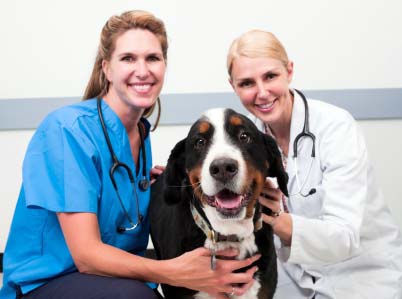 External bleeding should be staunched by applying gentle pressure from a cloth, bandages, or your own hand if necessary. Don't worry about cleaning out the wound until the bleeding has stopped. Take the dog to the veterinarian as quickly as possible. Antibiotics may be needed to stave off infection.
External bleeding should be staunched by applying gentle pressure from a cloth, bandages, or your own hand if necessary. Don't worry about cleaning out the wound until the bleeding has stopped. Take the dog to the veterinarian as quickly as possible. Antibiotics may be needed to stave off infection.
Internal bleeding, from a fall or from being hit by a car or other heavy object, can be more dangerous. The dog may show these signs: painful or swollen abdomen, pale gums, blood in vomit, urine, stools, saliva, or nose discharge. Internal hemorrhage is extremely serious and should be tended to by a veterinarian without delay.
Shock occurs when the heart and blood vessels shut down. It can result from disease or injury. The signs are depressions, rapid, weak heartbeat, dilated pupils, low temperature, and muscle weakness. Respond at once by keeping the animal warm and quiet, treating any visible injuries, and taking him to the veterinarian.
Fractures require immediate attention. Dogs will hold a fractured or dislocated limb in an unnatural position; sometimes a broken bone is visible through the skin. The dog should be transported to the veterinarian with as little movement as possible.
Heatstroke may occur when dogs are left in cars on hot, or even warm, days; when kennel areas do not have proper ventilation; or when dogs are overexercised on hot days. The signs are rapid breathing, rapid heartbeat, high body temperature (above 104 degrees Fahrenheit), and collapse.
Dogs suffering from heatstroke must be cooled down as quickly as possible. Spray him with cool water, place ice around the belly, head, and neck. Stop cooling when the dog's temperature reaches 103 degrees Fahrenheit. Call your veterinarian after administering the first aid, or better yet, have someone else call while you're treating your dog.
Vomiting and diarrhea are usually signs of problems with the digestive system, and could be caused by any number of things, from the ordinary (spicy food) to the dangerous (poison). Dehydration from vomiting or diarrhea can be fatal. Make sure the dog has plenty of water. If neither condition seems severe, feed the dog a bland diet of plain cooked chicken and rice for 12 hours. If the condition does not improve after 12 hours, call the veterinarian.
Seizures cause a dog to lose control of his muscles. He may fall on his side and seem to paddle the air. Surround the dog with a blanket so he won't hurt himself, but don't try to handle him; he may bite in a reflexive action. Call your veterinarian.
Bee and Wasp Stings can be painful and frightening for a dog. Follow these procedures if your dog is stung:
Usually a single sting does not present a serious problem. If the sting is on the nose, mouth or around the head, watch your dog carefully to make sure that any swelling does not interfere with breathing or swallowing. If the swelling increases dramatically just a few minutes after the sting, see a veterinarian immediately.
Multiple stings can cause more damage, and may be life-threatening. If you see your dog disturb a hive or swarm of wasps or bees, call the dog to you and run, or, if necessary, pick up your dog and carry it away. Try to put distance between your dog and the swarm as quickly as possible. Once you and the dog are safe, get medical attention as soon as possible.
If possible, give antihistamines to your dog right away (Your veterinarian can give you a supply for your dog's first aid kit, and advise you on dosage and administration). Then take your dog to the closest veterinarian. Treatment for massive stings usually involves intravenous catheterization, the administration of fluids, giving of corticosteroids and monitoring of vital signs. The goal of treatment is to prevent shock and circulatory collapse and to minimize damage to organ systems.
We recommend keeping the following items on hand in case of emergency. Ask your veterinarian to explain the proper use of these items.

You also may want to include:

If the unthinkable were to happen, are you prepared? Download this e-books to learn what steps to take if your dog goes missing.
Get Free Download Now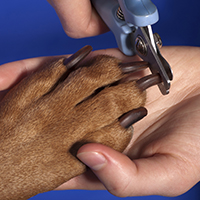 How to Make Your Own Paw Balm for Winter
To some dogs (especially breeds bui
How to Make Your Own Paw Balm for Winter
To some dogs (especially breeds bui
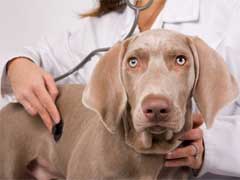 Kennel Cough in Dogs: Symptoms and Treatment
Kennel
Kennel Cough in Dogs: Symptoms and Treatment
Kennel
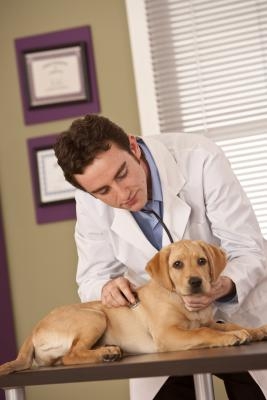 What Kinds of Dogs Have Fewer Health Problems?
What Kinds of Dogs Have Fewer Health Problems?
What Kinds of Dogs Have Fewer Health Problems?
What Kinds of Dogs Have Fewer Health Problems?
 How to Protect Against Dog Theft
How to Protect Against Dog Theft
How to Protect Against Dog Theft
How to Protect Against Dog Theft
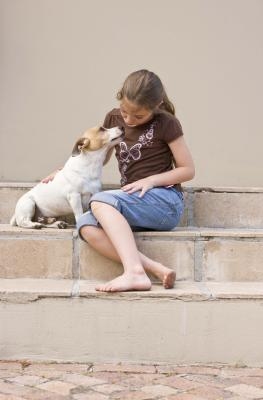 How to Stop My Dog From Eating Tissues
How to Stop My Dog From Eating Tissues
How to Stop My Dog From Eating Tissues
How to Stop My Dog From Eating Tissues
Copyright © 2005-2016 Pet Information All Rights Reserved
Contact us: www162date@outlook.com